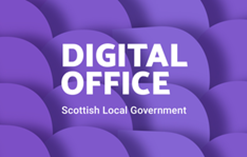A national asset management platform is set to be created to help Scotland’s local councils make more more informed decisions around procurement for digital technology solutions.
Scotland’s Asset Management Platform (STAMP) is being established as a central repository of data on platforms being used by local authorities around the country.
The project is being coordinated by the Digital Office for Scottish Local Government and it will assist local ICT project leads to assess the market for local government tech.
Colin Birchenall, Chief Technology Officer of the Digital Office for Scottish Local Government, revealed details of the plans last week in a presentation to the Society for Innovation, Technology and Modernisation (SOCITM), Scotland, at one of the group’s online meetings.
He said: “This is something we’ve been working on for some time now with Scotland Excel [the Centre of Procurement Expertise for Scotland’s local government sector] but we’re now [in position] where we want to launch this.
“This provides a repository of all the systems that are being used in local government, what capabilities they are being used for, their costs and contract life cycles. Now, key to that of course is the data; we’ve got data for around about a dozen of the councils and we’ll be issuing communications shortly to try to encourage others to join that.
“What I hope now is that by having this system in place, we’ll be able to demonstrate the value that we can get from that data in order to identify opportunities for collaborative procurement, common platforms etcetera.”
Birchenall said the Digital Office has also made great progress during lockdown towards creating a data eco-system, whereby local authorities should be able to share common data models and approaches.
He said the work began as a response to COVID-19 and the desire to use public infection data in a more targeted and useful way; in Glasgow, for example, the city was able to leverage a system that provided maps of probable and confirmed cases against maps of vulnerable communities. A blueprint for that particular tool is being supported by NHS National Services Scotland (NSS) who are make the data feed available to other councils across the country. The eventual aim is to create a playbook which will allow data practitioners around the country to make use of common data tools that allow for innovation at the local level.
Birchenall updated the audience also on work being done by the Digital Office to develop a cyber security accreditation scheme for digital telecare providers and also research being conducted into the different technologies in use by local authorities to support the planning process. The work, commissioned by Scottish Government, will help shape a new national digital planning strategy scheduled for release later this year.]
Work towards creating a digital assurance board is also being carried out to provide greater technical oversight over digital programmes that affect local government; the Digital Office, The Scottish Government, COSLA, SEEMIS and The Improvement Service have had their first meeting on the subject and will establish working groups where necessary on intersecting digital programmes such as that for SEEMIS – which is moving towards a cloud model of delivery for student data in Scotland – and also for the new Social Security Scotland body.
Finally, the Digital Office is also resetting its business plan after reflecting on its work over the last six months; the plan is currently sitting with the board and will be communicated in due course. The intention, though, is to provide greater clarity about the Digital Office’s core role moving forward, Birchenall added.
Source: FutureScot

